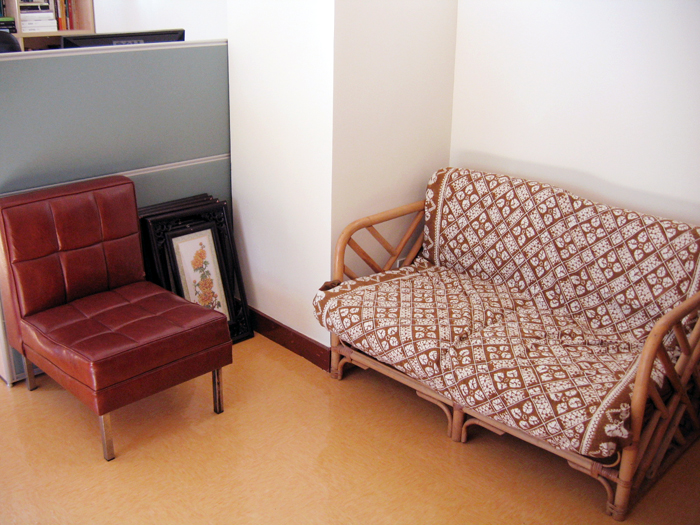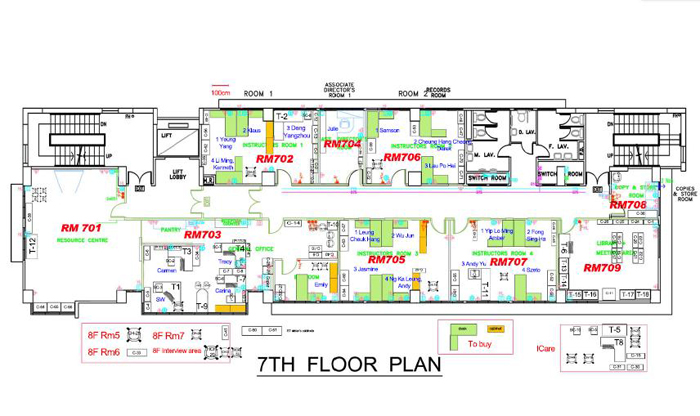 Reused bookshelves in the OUGE director's office (from left to right: Prof. Leung Mei Yee, Mr. Andy Heung and Ms. Susanna Tsuei. A big thank you to them and Miss Emily Ng for arranging the sharing!)
Reused bookshelves in the OUGE director's office (from left to right: Prof. Leung Mei Yee, Mr. Andy Heung and Ms. Susanna Tsuei. A big thank you to them and Miss Emily Ng for arranging the sharing!)
 Numerous reused bookshelves can be found throughout the OUGE office
Numerous reused bookshelves can be found throughout the OUGE office
 Before renovation, some doors had keypad locks that the new OUGE office does not need. Instead of replacing the whole door, only the lock was removed and a metal plate was installed over the cavity previously occupied by the lock.
Before renovation, some doors had keypad locks that the new OUGE office does not need. Instead of replacing the whole door, only the lock was removed and a metal plate was installed over the cavity previously occupied by the lock.
 A cloth covering gives a reused chair a fresh new look.
A cloth covering gives a reused chair a fresh new look.
 Comprehensive floor plan made by OUGE colleagues shows furniture drawn to scale.
Comprehensive floor plan made by OUGE colleagues shows furniture drawn to scale.
| |
The Office of University General Education (OUGE), which recently completed their Hui Yeung Shing Building office's renovations, successfully collected at least 50 pieces of furniture given away by various offices. They include shelves, desks, cabinets, chairs and more. OUGE colleagues are highly supportive of furniture reuse and found that acquiring used furniture has helped cut renovation costs. Also, the office did not purchase paper boxes for moving the office's items, as they picked up and reused over a hundred boxes that had been discarded by another unit.
Reusing furniture not only helps protect our environment by saving natural resources and landfill space, it is beneficial to users' health too as used furniture will not emit volatile organic compounds (VOCs), at a level as high as that by most new furniture.
Some valuable green moving tips shared by OUGE are:
Before renovation, identify existing items in the building space like window blinds and doors that can be reused, and request the renovation contractor to retain them (and repair/retrofit them where necessary), as most contractors throw away these items and buy new ones (which are expensive) by default.
When drafting a contract with the renovation contractor/the furniture supplier, include the service of moving/setting up/ retrofitting used furniture, and agree on a reasonable charge for the additional services in advance.
Having a space for temporary storage of the used furniture is very helpful as it takes a while to collect everything.
A floor plan that shows used furniture drawn to scale is crucial, as unlike custom-made furniture, one has to make sure used furniture can really fit the space available.
If many pieces of used furniture are involved, it is very helpful to have a database that shows each piece of furniture's photo and dimensions for quick reference.
|